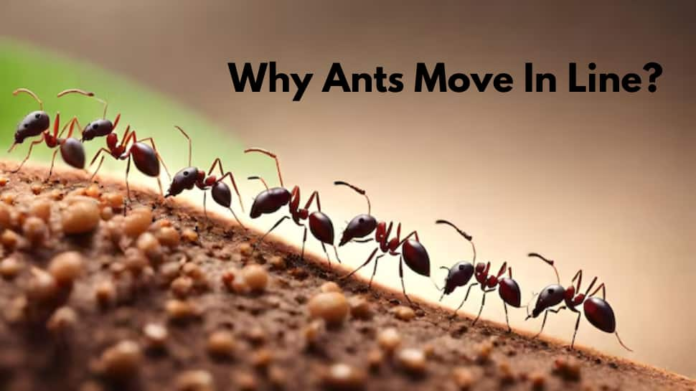If you have ever watched ants move, you might have noticed that they almost always walk in a neat line, one behind the other. While it may look like discipline or training, scientists say this pattern is actually the result of chemical communication, teamwork, and survival instincts. According to researchers who study insect behaviour, the secret lies in a special scent trail that helps ants move efficiently, find food, and stay safe.
Pheromones
Experts explain that ants walk in a line because they follow chemical signals known as pheromones. When a scout ant discovers food, it walks back to its colony while releasing a pheromone trail on the ground. This invisible chemical path acts like a guide for other ants.
Add Zee News as a Preferred Source
As more ants follow the path, they also release the same chemical, making the trail stronger. The stronger the pheromone smell, the more ants are attracted to it. This system helps the colony quickly reach food sources without getting lost or wasting time.
Scientists say this behaviour shows how ants communicate without speaking or making sounds. The entire colony depends on these signals for coordination, similar to humans using maps or navigation apps.
Teamwork Saves Time and Energy
Moving in a line also helps ants save energy and work more efficiently. By following a single path, ants avoid bumping into each other and reduce confusion. This organised movement lets thousands of ants travel quickly to food sources and return to the nest without chaos.
(Also Read: Why Are Shirt Pockets Always On The Left Side?)
Researchers note that ants rarely choose random routes. Instead, they choose the shortest and safest paths and reinforce them with pheromones. Over time, the colony develops highways that all ants follow.
This teamwork makes ants one of the most successful species on Earth when it comes to cooperation and resource sharing.
Safety in Numbers
Scientists also point out that moving in a line helps protect ants from predators. When ants travel together, they appear larger and more intimidating to small insects that may try to attack them. In dense forests or grasslands, moving in a line also helps the colony avoid dangerous areas such as water puddles, poisonous plants, or territories of other insect colonies.
A Living Network
Experts say that the ant trail system works almost like a living traffic network. It updates in real time. If an obstacle blocks the path, ants explore alternative routes. Once a new safe path is found, they mark it with pheromones and the entire colony adjusts within minutes.
Scientists believe humans can learn from this natural system. In fact, some computer algorithms and traffic management models are inspired by ant movement and pheromone-based decision-making.
